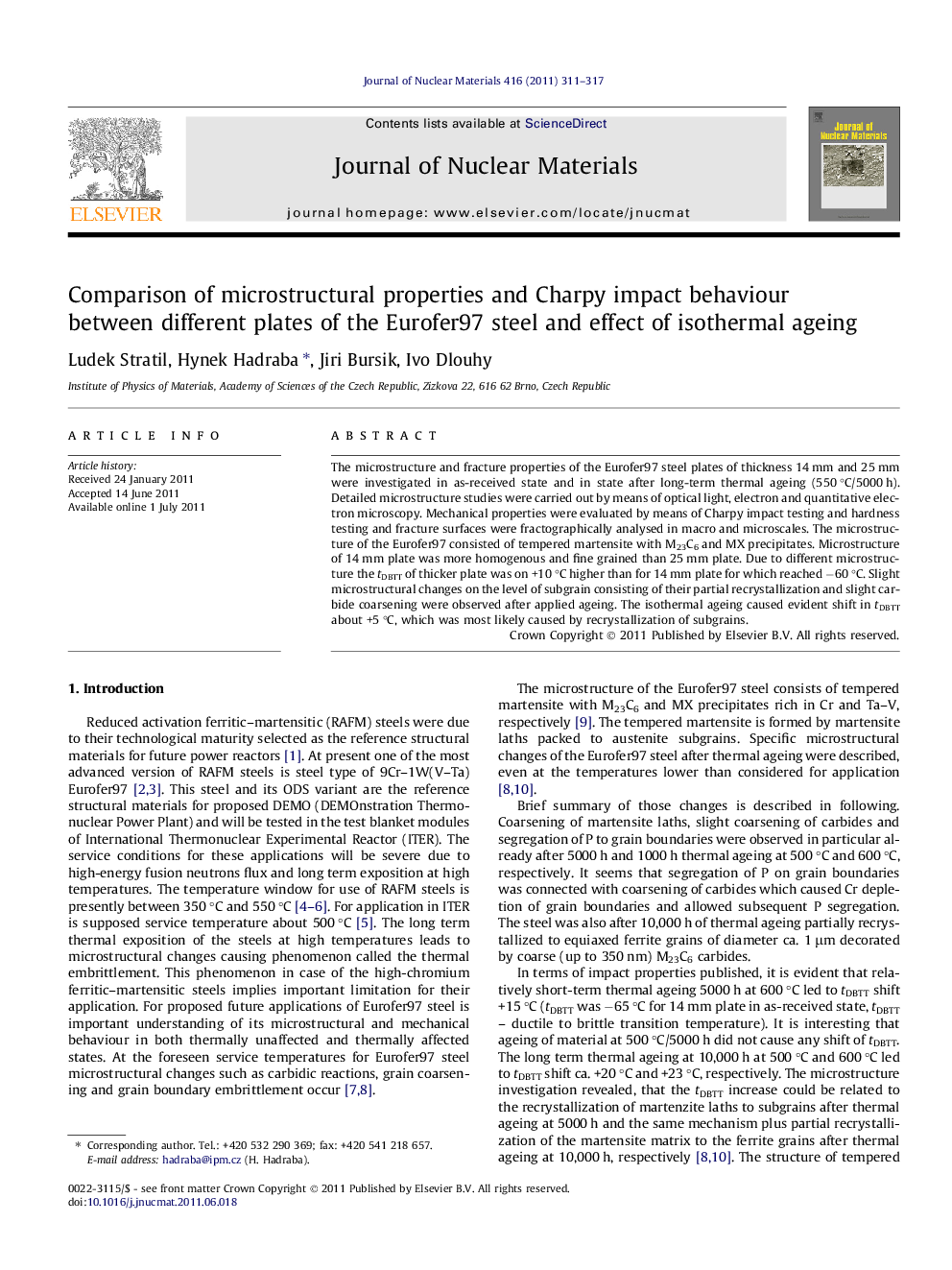| Article ID | Journal | Published Year | Pages | File Type |
|---|---|---|---|---|
| 1566771 | Journal of Nuclear Materials | 2011 | 7 Pages |
The microstructure and fracture properties of the Eurofer97 steel plates of thickness 14 mm and 25 mm were investigated in as-received state and in state after long-term thermal ageing (550 °C/5000 h). Detailed microstructure studies were carried out by means of optical light, electron and quantitative electron microscopy. Mechanical properties were evaluated by means of Charpy impact testing and hardness testing and fracture surfaces were fractographically analysed in macro and microscales. The microstructure of the Eurofer97 consisted of tempered martensite with M23C6 and MX precipitates. Microstructure of 14 mm plate was more homogenous and fine grained than 25 mm plate. Due to different microstructure the tDBTT of thicker plate was on +10 °C higher than for 14 mm plate for which reached −60 °C. Slight microstructural changes on the level of subgrain consisting of their partial recrystallization and slight carbide coarsening were observed after applied ageing. The isothermal ageing caused evident shift in tDBTT about +5 °C, which was most likely caused by recrystallization of subgrains.
► Two plates of Eurofer97 steel were tested in thermally unaffected and aged state. ► The two plates of Eurofer97 differ significantly in mean prior austenite grain size. ► The different grain size lead to different transition temperature between the plates. ► Thermal ageing applied lead to slight microstructural changes of the Eurofer97. ► The microstructural changes caused small shift of transition temperature.
